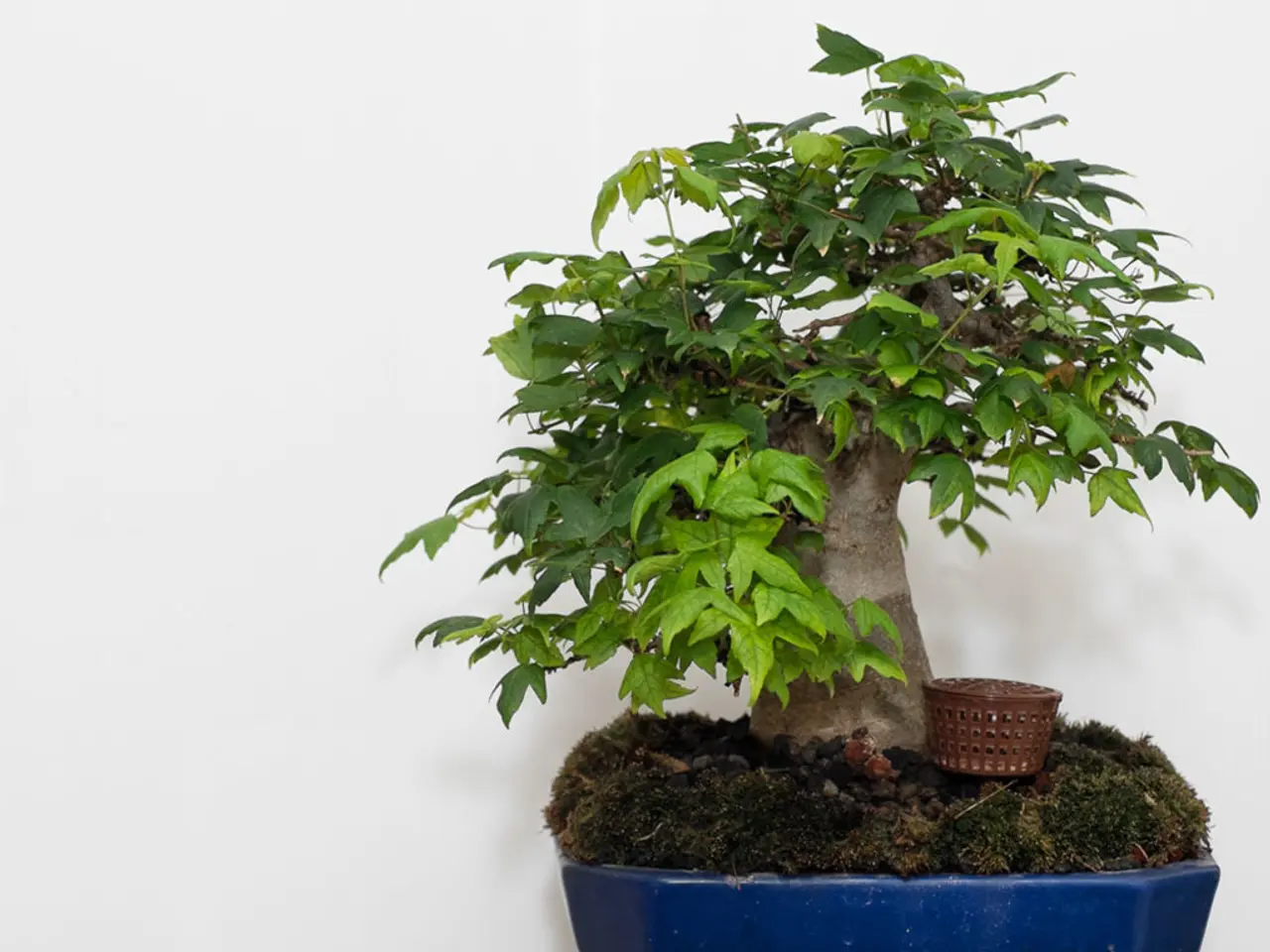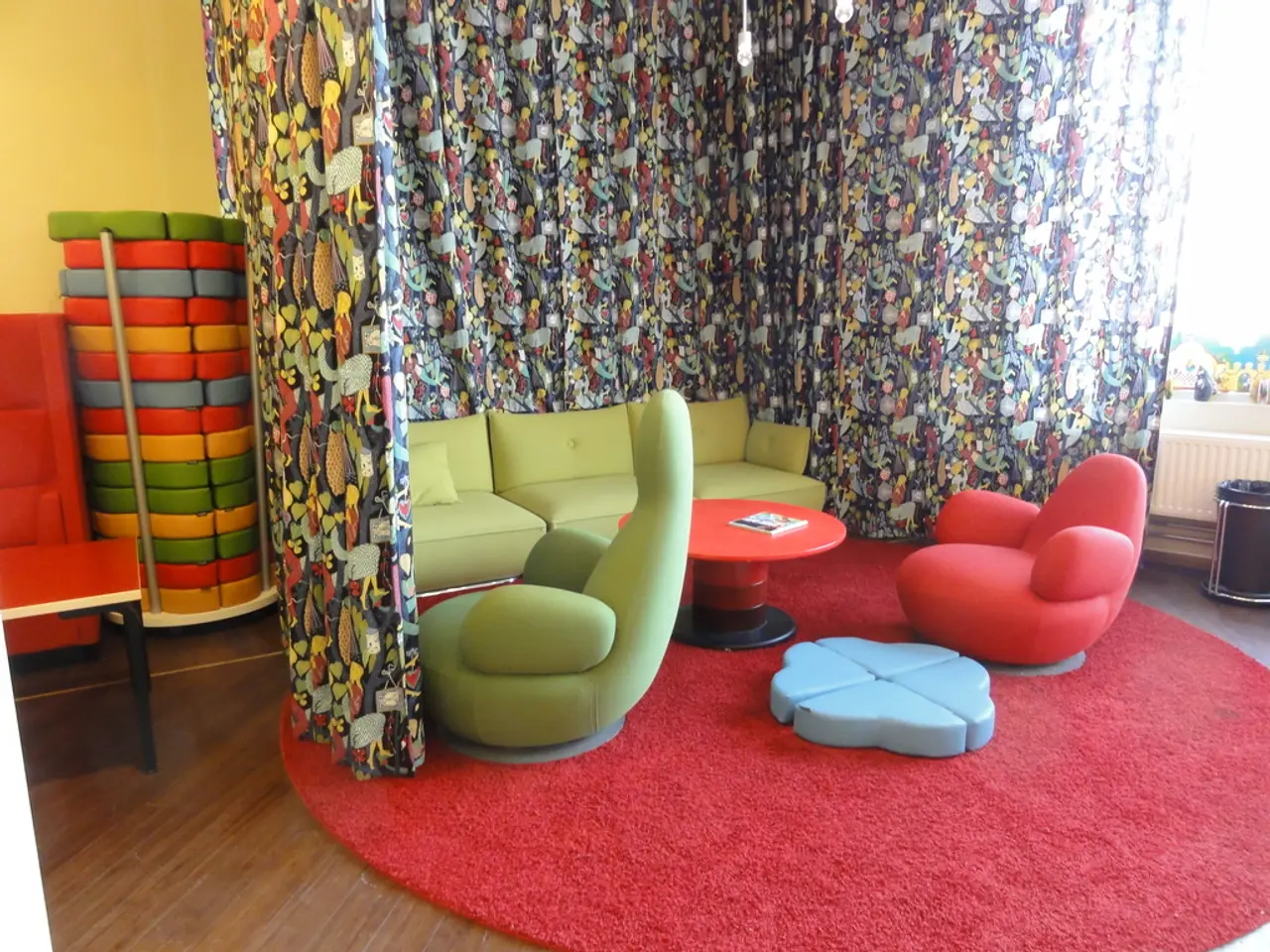Differences and Ponderables in Bonsai Maintenance: Indoor vs. Outdoor
For those who have taken up the art of Bonsai, understanding the unique requirements for indoor and outdoor trees is crucial for their thriving growth. Here's a guide on the key differences in caring for these two types of Bonsai trees.
**Lighting**
Indoor Bonsai thrive in bright, indirect light, making well-lit windows or grow lights ideal. East or south-facing windows are preferred for most species. On the other hand, outdoor Bonsai need more direct sunlight but should be protected from intense afternoon sun to prevent scorching. East or west-facing locations are suitable.
**Temperature Control**
Indoor Bonsai are protected from extreme temperatures, with an ideal range between 15°C to 25°C (59°F to 77°F). Outdoor Bonsai are exposed to varying temperatures but should be shielded from frost. In colder climates, moving them to a greenhouse or indoor space during winter is recommended.
**Humidity**
Indoor Bonsai typically require higher humidity levels, often above 50%, due to the dry indoor environment. Outdoor Bonsai adapt to natural humidity levels, which can vary significantly depending on the climate and weather conditions.
**Watering**
Indoor Bonsai are watered when the top layer of soil feels dry, which can be more frequent during active growth phases. Outdoor Bonsai may require more frequent watering due to exposure to sunlight and wind.
**Pruning and Protection**
Indoor Bonsai pruning focuses on maintaining shape and promoting healthy growth, while outdoor Bonsai require additional protection from pests and diseases prevalent outdoors. Pruning may also involve removing damaged leaves or branches caused by wind or frost.
**Seasonal Care**
Indoor Bonsai remain relatively consistent throughout the year, with adjustments for changes in indoor conditions. Outdoor Bonsai require seasonal adjustments, such as moving trees to protected areas during winter or providing shade in summer.
**Moving Bonsai Trees**
Moving Bonsai trees between indoor and outdoor locations based on the season can optimize growth and health. This approach helps maintain a balance of light, temperature, and humidity, which can enhance the tree's overall well-being.
**Soil Mix**
The ideal Bonsai soil mix consists of a blend of organic matter like peat moss or compost, and inorganic materials such as perlite or vermiculite. Outdoor Bonsai may require a more porous mix to accommodate excessive rainfall or irrigation.
**Pest and Disease Management**
Indoor Bonsai are more prone to spider mites, mealybugs, and scale, while outdoor Bonsai are more susceptible to fungal diseases. Proper protection measures and regular check-ups are essential for maintaining the health of both indoor and outdoor Bonsai.
**Fertilization**
Fertilization is crucial for Bonsai trees, requiring a thoughtful balance between providing essential nutrients and avoiding overindulgence. Organic fertilizers, derived from natural sources, provide a slow-release of nutrients and tend to be gentler on the roots. Synthetic fertilizers, manufactured chemicals, provide a rapid influx of nutrients but can be harsh on the roots and lead to soil depletion.
**Watering Schedules and Humidity**
Indoor Bonsai need a deliberate approach to maintain ideal moisture levels, while outdoor trees follow natural weather patterns. Outdoor bonsai care typically involves exposure to natural humidity fluctuations, whereas indoor bonsai trees are often subjected to dry air.
**Air Circulation and Ventilation**
Proper air circulation and ventilation are crucial for maintaining healthy indoor and outdoor Bonsai trees, as they help to prevent fungal diseases and promote strong root development.
By understanding and addressing these key differences, Bonsai enthusiasts can ensure their indoor and outdoor trees thrive in their respective environments.
Incorporating aspects of different lifestyles, home-and-garden enthusiasts can even extend their gardening pursuits to include Bonsai. While indoor Bonsai demand a more controlled environment with bright, indirect light, humidity above 50%, and purposeful watering, outdoor Bonsai thrive under more varied conditions, requiring direct sunlight, protection from intense light, and seasonal adjustments to temperature and location for optimal growth.




